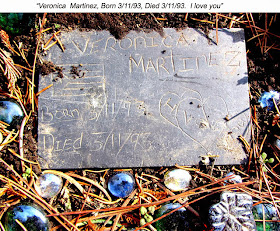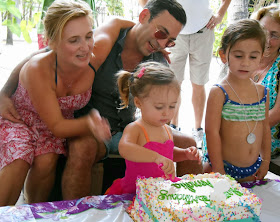(The photos below were taken in Hope Cemetery, Worcester, unless otherwise labelled.)
I’ve always been
drawn to explore cemeteries, especially when I travel. And I love photographing monuments and gravestones.
Often the words on the stone are intriguing-- clues to a cryptic but dramatic
story.
A cemetery in Minster Lovell, Gloucestershire, England
My kids would
probably attribute my love of cemeteries to my morbid streak, but I disagree—I
love cemeteries because they are filled with testaments of love as well as hope
for a future reunion with the departed. Lovingly tended graves are a physical pledge:
“You are not forgotten. You live in my
heart.”
So it’s no
wonder that, for a photojournalism course I took last year at the Worcester Art
Museum with photographer Norm Eggert, I chose for my project photos taken over
many visits to Hope Cemetery in Worcester.
I posted some of
those photos on Dec. 3, 2012, in “A Cemetery Called Hope.” I began the essay this way: “Hope
Cemetery is the place where my body will be buried. I like visiting and
photographing cemeteries because they’re filled with virtual symbols of love,
expressed in the words engraved on the stones, the flowers, candles, flags, toys,
burning incense, balloons, statues, birthday cakes, prayers,
rosaries, letters, even bottles of whiskey and un-smoked cigarettes left
by visitors on the graves.
“All
these things are an expression of the hope that one day we may be reunited with
our departed loved ones. No one knows if that’s true, but that’s why
‘Hope’ is an appropriate name for a cemetery.”
Over the years, I‘ve
visited beautiful and incredibly moving cemeteries in many countries. Some that stand out in memory include the
“City of the Dead” in Glasgow, Scotland; the famous “Pere Lachaise” in Paris
(where I saw a mourner pour a whole bottle of Scotch on the grave of Jim
Morrison—and I was enchanted by the monument to Heloise and Abelard—the nun and
the philosopher/monk, apart in life but together forever in death.)
Heloise and Abelard, Pere Lachaise, Paris
One of my favorite
cemeteries, which I happened on by chance, is the “poor people’s cemetery” on
the island of Martinique, where each grave—every one of them homemade-- looks
like a little house with a photograph of the deceased over the door.
Day of the Dead poster, Oaxaca, on my studio wall
The ultimate
cemetery experience is staying up all night in Mexican cemeteries during the
Day of the Dead celebrations. I’ve had
that privilege as a member of chef Susana Trilling’s “Dias de Muertos” cooking adventures in
Oaxaca.(See “Seasons of My Heart” for a list of all her culinary tours.)
The Mexicans have a much more comfortable relationship with death than we do in the United States. On the days of the dead (children are believed to return on October 31, adults the following day)—the surviving family members decorate the graves with flowers, candles and (often) elaborate sand paintings and then settle in to spend the night and welcome visitors with food, music, beer and whatever else the dead person liked in life. The whole holiday resembles a fiesta more than a funeral.
Of course I take
photos when I’m visiting a cemetery, and often I’m photographing and weeping at
the same time. Most graves don’t make me
cry, and some make me laugh, like the one that showed the deceased posing with
his favorite cockfighting rooster.
But when I see
an elderly person talking to a gravestone, and especially when I see the stone
of a young child who barely tasted life, but whose grave is decorated at every
season by parents who never stopped mourning—that’s when I start crying.
At Hope Cemetery
I was frequently brought to tears by the small, flat gravestones in the “Garden
of the Innocents” where the city of Worcester will pay for the burial of
infants and children whose parents can’t afford a plot and gravestone.
Most touching of
all the small stones, where parents leave toys and holiday decorations, was
this one where the parents carved the message by hand:
Given my
penchant for photographing cemeteries, it was a sure thing that I would sign up
for a class at the Worcester Art Museum that takes place next Friday, led by my
friend, photographer Mari Seder. All
day, from 10 a.m. to 4 p.m., we will be photographing in Worcester’s Rural
cemetery—within walking distance of the Museum—with a break for a picnic
lunch. I’ve heard that Rural Cemetery is
even older and more picturesque than Hope Cemetery, and I’ve been wanting to
visit it; an experience which will be even better with Mari’s guidance and photographer’s eye.
Mari is a prize- winning photographer who
spends half the year living in Worcester and the other half in Oaxaca, Mexico,
where she’s had exhibits of her stunning photographs of Mexican women and their
household altars. Here’s a photograph
she took of the grave of a 12-year-old Mexican girl, Juanita Velasquez Cruz,
who lived from 1890 to 1902.
I’ve already traveled
to Oaxaca twice for the classes that Mari offers there in photography, painting
and collage, and once I got to tag along with her to photograph in Puebla,
as well, where the Indian-decorated
churches of Cholula, virtually encrusted with zillions of folk art angels, blew
my mind. You can see them on my blog
post “Angels in the Architecture”.
Mari’s day-long class at Rural Cemetery on
Friday is part of a new series of immersion classes offered by WAM that allows
students to spend an entire day with regional artists in an intensive day-long
class in each artist’s speciality, learning their secrets and getting face time
with these experts in the fields of photography, collage, illustration or Celtic
art.
Now that fall colors are burnishing the
trees, I’m hoping for some remarkable photographs to come out of Rural Cemetery
this Friday. Stay tuned.







































